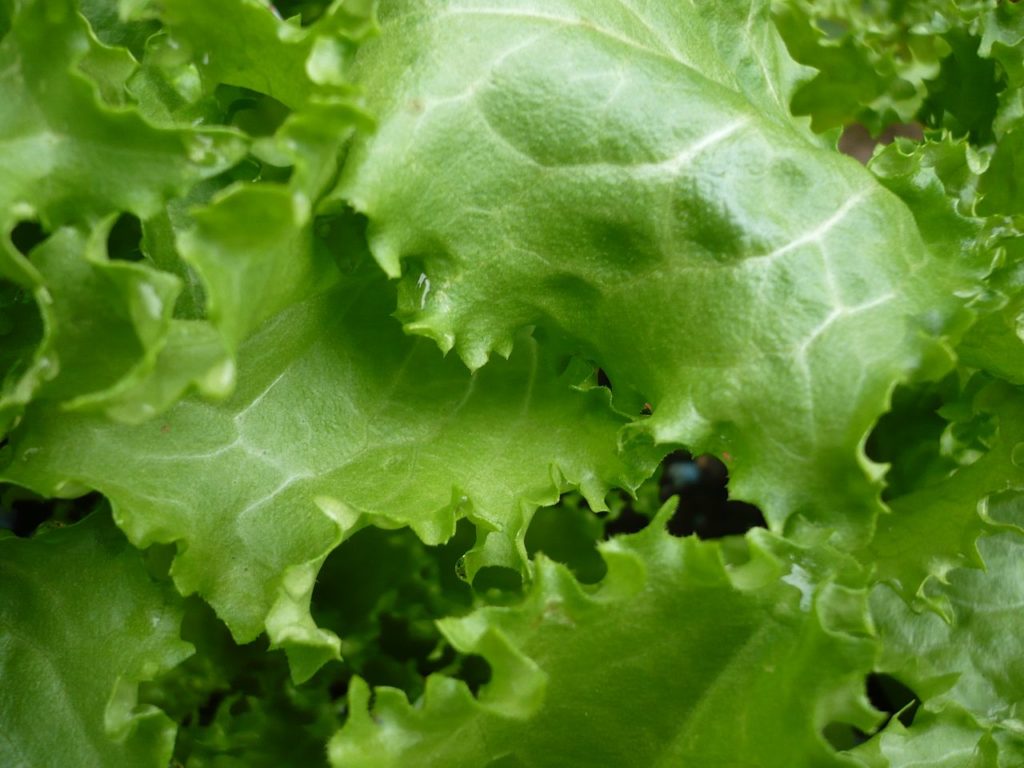One of the first steps of any recipe is to wash your produce. In today’s global food system, fruits and vegetables make a lot of stops before reaching your plate, so you can never be too careful. In fact, contamination of produce by bacteria like Salmonella is a major public health concern. But, that’s not all!
Diarrheal disease caused by food poisoning could have many possible causes, but one of the most common is human norovirus. Norovirus is the causative agent behind what people call a “stomach bug,” “stomach flu,” or simply “that thing that’s going around.” Norovirus, however, is neither a bug nor the flu. It is a highly infective virus all on its own that can spread from person to person by the fecal-oral route and requires only 18 virus particles to start an infection. And the thing just won’t die! It survives freezing and up to 200 ppm of chemical disinfectants like chlorine. It also has the ability to stay infectious for months after the person has recovered. This virus can very easily find its way to your food at any point from farm to fork. Common sources of contamination include water used to irrigate crops, farm worker hands, and soil that has been fertilized with manure.
As the saying goes, an ounce of prevention is worth a pound of cure. Simply washing your lettuce before eating may not be enough to remove norovirus, according to a small but growing body of scientific evidence. Researchers have found that norovirus may be able to attach itself to molecules protruding from the surface of the leaves of fresh produce like Romaine lettuce and baby spinach. Therefore, efforts are underway to learn about how norovirus does this, and what can be done to prevent it.
A research team at Ohio State University is one of the groups of scientists working to understand how norovirus binds to lettuce leaves. They used a technique called immunofluorescence to determine precisely where on the lettuce leaf surface the virus particles are binding. They conducted a clever set of experiments to narrow down possible binding sites, what those binding sites are made of, and what prevents binding. Scientists treat virus particles with specially made “anti-norovirus antibodies” — these molecules are designed so that they only attach to the virus’s outer coating. These antibodies are tagged with a fluorescent molecule. This way, the fluorescent molecule won’t attach to anything else. Then, when the viruses bind to the leaves, viewing the leaves under a fluorescent light microscope causes them to glow in the locations where the virus has attached.
Scientists have known that norovirus is able to bind to molecules protruding from the surface of white blood cells called histo blood group antigens. These antigens are what give your blood it’s “type”. There are “A” antigens on the surface of Type A blood, “B” antigens on the surface of Type B blood, both antigens on AB blood, and neither antigen on Type O blood. As it turns out, even though plants don’t have blood, their cells also have molecules on their surface that are chemically similar to the blood type antigens in animals. The researchers set out to first determine if these antigens are present on the surface of lettuce leaves from the grocery store (they were!), if norovirus-like particles were able to bind to the antigens (they were!), which part of the plant cell wall contains these antigens (it was the xylan, a kind of starch), and what part of the xylan specifically attaches to the virus (it was a simple sugar called fucose).
Another interesting finding from this study is that norovirus was able to bind to the lettuce leaves better when the cell wall was partially digested with enzymes. When fruits and vegetables go bad, that is typically because food-spoilage bacteria produce enzymes that start to break down their cell walls. Bacteria need to eat, too, after all. These bacteria are not harmful to us, but they can inadvertently create an opportunity for pathogens like norovirus to attach themselves to our vegetables. By damaging the lettuce cell wall, it actually exposes more carbohydrate molecules, giving the virus even more available binding sites, like parking spaces in a parking lot. More available binding sites means that more viruses can “park” there.
Past studies have shown that even high concentrations of chlorine are unable to reduce norovirus to below infectious levels. This study is an incremental but important step along the way to understanding how norovirus attaches itself to fresh produce. If we are able to learn how the virus attaches, perhaps we will be able to come up with effective ways of removing it. Other efforts are underway to prevent norovirus contamination in the first place, at the beginning of the chain rather than at the end. In the meantime, consumers should be cautious to buy produce only from growers that take food safety seriously with clean facilities and workers that practice good hygiene.


